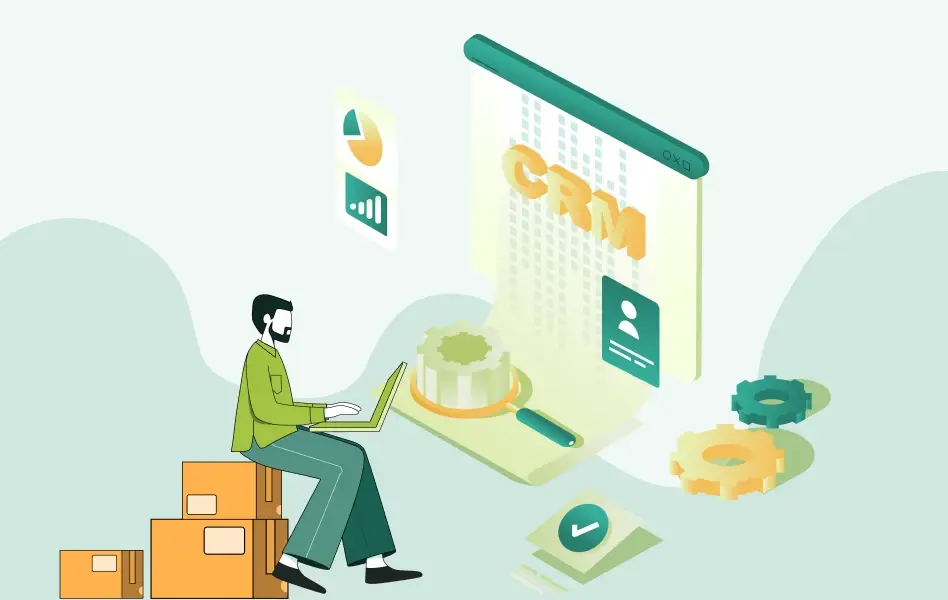Contents
Introduction
When building an enterprise-level B2B application, one of the biggest decisions companies must make is whether to go with a single-tenant or multi-tenant architecture. Both approaches have advantages and disadvantages, and choosing the right one can be critical to the success of your B2B business. In this article, we’ll take a closer look at what each option entails and closely understand the approach of single vs multi-tenant SaaS architecture for B2B business.
Single-Tenant Architecture
Single-tenant architecture is an approach in which each customer or tenant has a separate instance of the application running on the server. In other words, each customer has a dedicated environment with their database, application server, and other resources. This approach provides maximum isolation and security, as each tenant’s data is completely separate from other tenants’ data.
Single-tenant architecture is a popular choice for businesses with complex or highly regulated data, such as financial services, healthcare, or government agencies. These industries require a high level of data security and regulatory compliance, and a single-tenant architecture provides the necessary level of control and isolation.
Another advantage of single-tenant architecture is the ability to customize the application to the specific needs of each customer. Since each tenant has a dedicated environment, they can make changes to the application without affecting other tenants. This makes it easier for businesses to provide tailored solutions to their customers and can help differentiate them from competitors.
However, the downside of a single-tenant architecture is that it can be more expensive and time-consuming to maintain. Each tenant requires their own set of resources, which can increase hardware and software costs. Additionally, each tenant may require upgrades and maintenance, which can be time-consuming for the development team.
Multi-Tenant Architecture
Multi-tenant architecture is an approach in which multiple customers share the same application instance and database. In other words, each customer is hosted on the same server, but their data is logically separated from other customers’ data. This approach is more cost-effective, as multiple tenants can share the same resources, resulting in lower hardware and software costs.
Multi-tenant architecture is a popular choice for businesses that require scalability and agility, such as SaaS (Software as a Service) providers. With multi-tenancy, SaaS providers can easily add new customers and scale up their resources as needed. This approach is also beneficial for businesses with less complex or less regulated data, as the shared environment is less restrictive.
Another advantage of multi-tenant architecture is that it is easier to maintain and upgrade. Since all tenants share the same environment, upgrades and maintenance only need to be performed once, reducing the workload on the development team.
However, the downside of multi-tenant architecture is that it can be less customizable than single-tenant architecture. Since all tenants share the same environment, any changes made to the application will affect all tenants. This can make it more difficult to provide tailored solutions to specific customers.
Which One to Choose?
The choice between single-tenant and multi-tenant architecture ultimately depends on the specific needs of your business. If you require maximum isolation and control over your data and are willing to pay a higher cost for it, then a single-tenant architecture may be the best option. On the other hand, if you require scalability and agility and are willing to sacrifice some customization for cost savings, then a multi-tenant architecture may be the better choice.
It’s also worth noting that some companies have adopted a hybrid approach, using both single-tenant and multi-tenant architectures depending on the needs of their customers. For example, a company may provide a single-tenant architecture for customers with complex or regulated data and a multi-tenant architecture for customers with less complex data.
When choosing between single-tenant and multi-tenant architecture for your software application, there are several factors to consider to determine which approach is best suited for your business. Below are some of the key factors to consider:
1. Data Security
One of the primary considerations for businesses is data security. Single-tenant architecture provides maximum data security and isolation, making it a better option for businesses that require a high level of data security and regulatory compliance. If your business deals with sensitive data, such as personal or financial information, a single-tenant architecture may be the better choice.
2. Customization
The single-tenant architecture allows for greater customization, making it a better option for businesses that need to provide tailored solutions to their customers. If your business requires customizations to meet the specific needs of each customer, a single-tenant architecture may be the better choice.
3. Cost
Cost is another important factor to consider. Multi-tenant architecture is more cost-effective, as multiple tenants can share the same resources, resulting in lower hardware and software costs. If your business has a tight budget, or if you need to scale quickly without incurring significant costs, a multi-tenant architecture may be the better choice.
4. Scalability
Scalability is important if your business needs to rapidly add new customers and scale up its resources. Multi-tenant architecture is more scalable, making it a better option for businesses that need to rapidly add new customers and scale up their resources.
5. Maintenance
Maintenance is another factor to consider. Single-tenant architecture can be more time-consuming to maintain, as each tenant may require upgrades and maintenance. In contrast, multi-tenant architecture is easier to maintain and upgrade since all tenants share the same environment. If your business has a small development team or limited resources to dedicate to maintenance and upgrades, a multi-tenant architecture may be the better choice.
6. Performance
The performance of your application is also an important factor to consider. Single-tenant architecture provides greater performance, as each tenant has its dedicated resources. If your application requires high performance, a single-tenant architecture may be the better choice.
7. Legal and Compliance Requirements
Finally, businesses should consider any legal and compliance requirements that may impact their choice of architecture. Certain industries, such as healthcare or finance, may have specific regulatory requirements that mandate the use of a single-tenant architecture.
Conclusion
In conclusion, choosing between single-tenant and multi-tenant architecture requires careful consideration of several factors. By weighing the advantages and disadvantages of each approach, businesses can choose the architecture that best meets their specific needs and requirements. To make B2B manufacturing businesses more efficient, WizCommerce has developed a user-friendly digitization tool to simplify and streamline their pre-sales operations. With the help of our software, you can manage your designs and sample data with our super easy-to-use Product Information Management (PIM) system. You can create customized catalogs and quotations in buyer formats in less than 10 minutes, and share them with your buyers instantly.




































































































